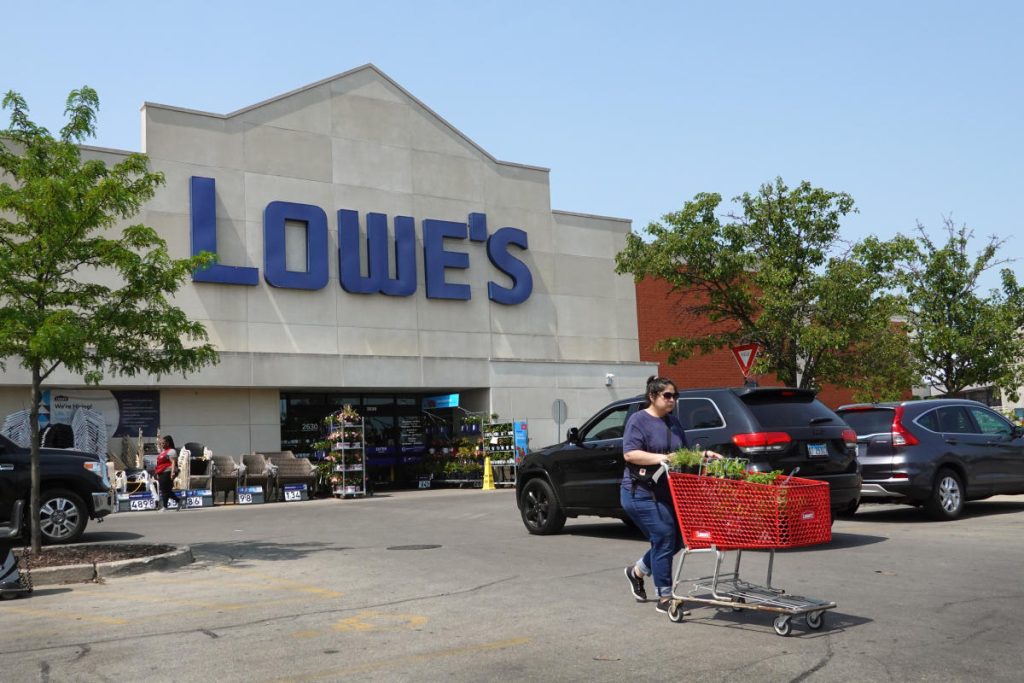Lowe’s (LOW) do-it-yourself customers are leaving the house.
The home improvement retailer’s CEO, Marvin Ellison, said that its shoppers are taking a more “cautious approach” to spending on large ticket items, as they’re more eager to splurge on experiences post-COVID.
“We think the snapshot to date is a little choppy because … that DIY customer is not only being impacted by inflation and in some regards interest rates, but they’re also investing in more experiences, whether that’s travel or whether it’s concerts and other things that we’re all re-engaging with coming out of the pandemic years,” Ellison said at the Goldman Sachs Global Consumer Conference in New York City on Wednesday.
Customers spending less on discretionary items and falling lumber prices weighed on Lowe’s earnings in the most recent quarter. Same-store sales dropped 1.6% while revenue came in at $24.9 billion, slightly less than estimates, in the second quarter.
The DIY consumer, which provided a major boost to the home improvement retailer during the pandemic, drives 75% of Lowe’s revenue, the company said. (The other 25% is driven by its Pro business.)
“Whenever that DIY customer becomes cautious, specifically on big-ticket [items], it disproportionately affects us,” Ellison said at the conference.
This shift in consumer spending to the “experience economy,” as opposed to spending on goods, is a larger trend playing out at big retailers, who have warned investors lately about slowing discretionary spending.
“Consumer demand for Live Entertainment has come roaring back since exiting the pandemic,” Bank of America analyst Jessica Reif Ehrlich wrote in a note to clients. “Driven by the pent-up demand for experiences, consumers have flocked in droves toward live events and concerts.”
Young people are driving this changeup, Ehrlich said, noting that there’s a “demographic shift in preferences toward experiences among the younger millennial and Gen Z population — which are also becoming more important elements of the workforce with increasing incomes and wealth as a result.”
Ehrlich expects that to continue too. “This backdrop has supported supply and demand tailwinds which all appear to be sustainable over the next several years,” she wrote.
Lowe’s optimistic DIYers will return
However, Ellison said the shift in consumer behavior is a “short-term phenomenon” that will eventually lead to normalized demand.
“We don’t have a point of view as to when that inflection point happens, but we’re expecting that pressure to remain for the balance of the year,” he said.
Over the medium and long term, though, the team is positive.
“We’re hoping that when that pressure is removed and that customer regains their confidence, we’re going to be well positioned to take share because we’ve made the investments,” Ellison said.
For 2023, the company expects sales to decline 2% to 4%, as strength in its Pro business and online sales will be offset by this “ongoing pressure from DIY discretionary purchases,” CFO Brandon Sink said on a call with investors following the results.
Lowe’s is gaining momentum from Wall Street, though. Shares are up 15% so far this year. Its competitor, Home Depot (HD) — not as much, with shares up 3.5% year to date.
—
Brooke DiPalma is a reporter for Yahoo Finance. Follow her on Twitter at @BrookeDiPalma or email her at [email protected].
Click here for the latest stock market news and in-depth analysis, including events that move stocks
Read the latest financial and business news from Yahoo Finance
Read the full article here














